PHOTOS: An inside look at the coolest workplaces of the future
Technology including employee badges and sensors around the office are already tracking employees’ location and behavioral data. Employers can use this data to determine how space could be better used and how productivity and information sharing could be improved in the future.
And windows that allow for views of the outdoors and exposure to natural sunlight have been found to make for happier workers with more mental energy and creativity.
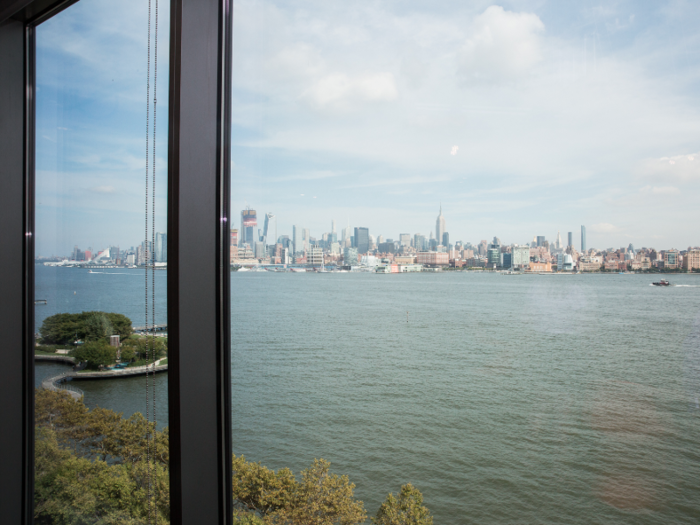
Source: 99u/Ron Friedman
Connecting workers to nature can happen indoors, too. Greenscaping around the office may help lower worker anxiety levels and increase productivity.
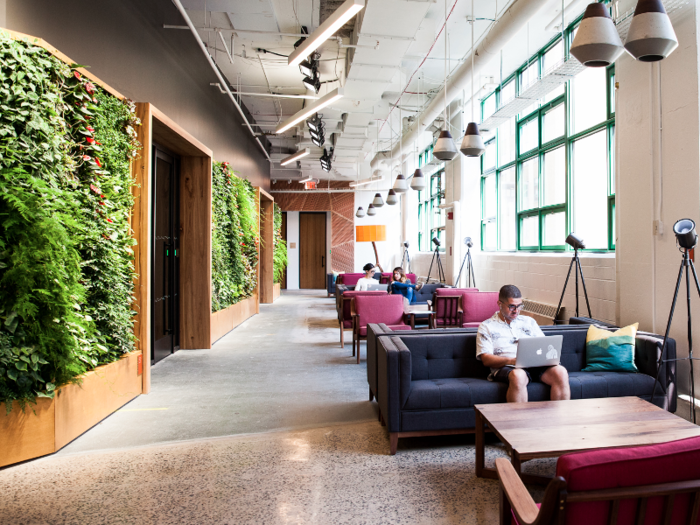
Source: 99u/Ron Friedman
"Connection to nature is super important," Claire Weisz, a founding principal at WXY architecture + urban design, told Business Insider. She said that creating enjoyable open areas and outdoor seating, dining, and activities has been and will continue to be "the secret to success" in workplace design.

Green roofs will also reduce energy use and lower ambient temperatures in the summer.
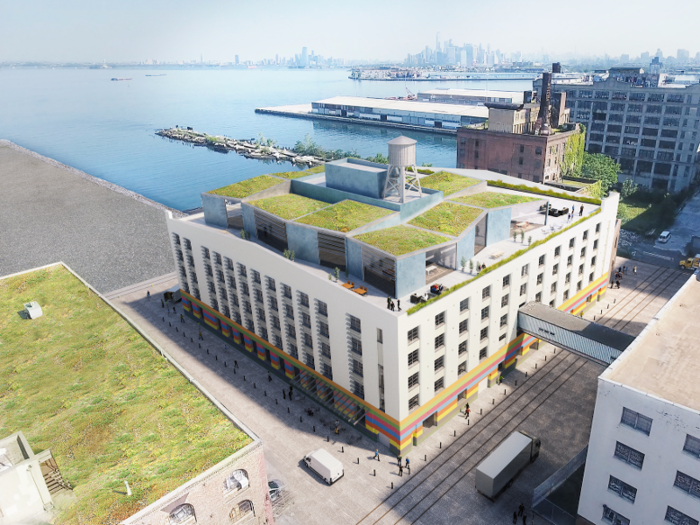
Outdoor seating, dining, and activities areas will allow people to work, recreate, and entertain.
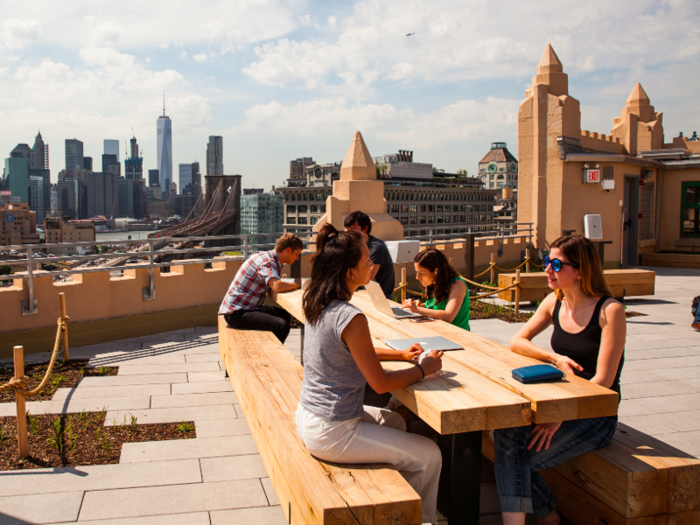
These spaces may also be used to entertain clients, colleagues, and guests.
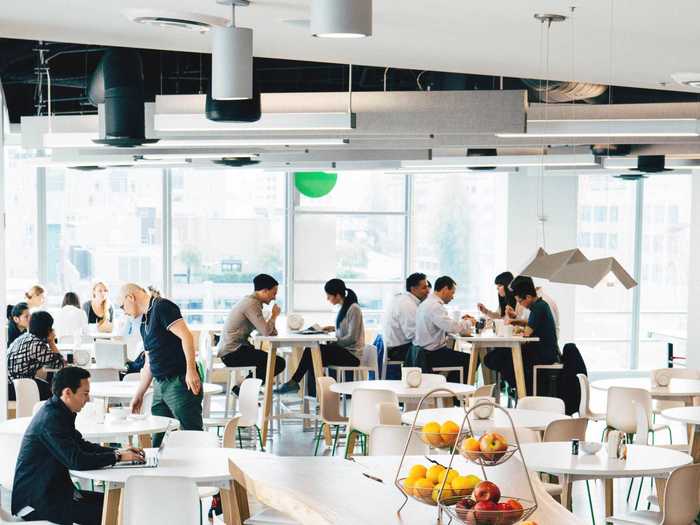
Communal kitchen spaces will offer daily food options so employees can stay close to work and work comfortably.

Centrally-located staircases may be used as a way to not only physically connect people on different floors, but also as a communal space that drives collaboration.
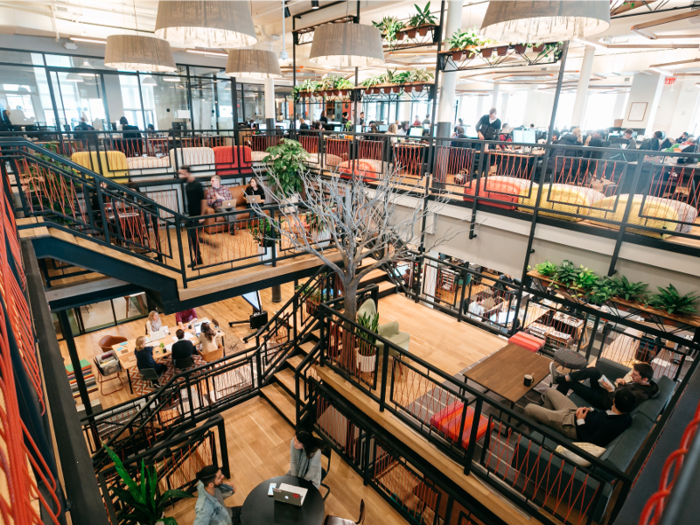
Brainstorm rooms, on the other hand, would be covered in whiteboards or other surfaces that lend themselves to problem-solving on the fly.
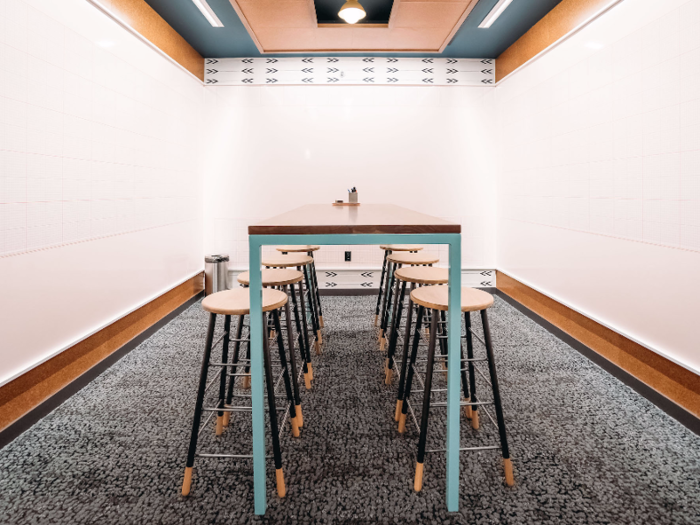
Conversation conference rooms, for example, will be more intimate and designed with acoustics in mind. Low tables, comfortable seating, table and floor lamps along with layered materials and textures provide an escape from the formality of a standard conference room at WeWork.

Smaller conference rooms will cater to the nature of the meeting.

Large conference rooms will still allow large groups of people to meet at a time. Technology will allow people to book conference rooms in any city or area.
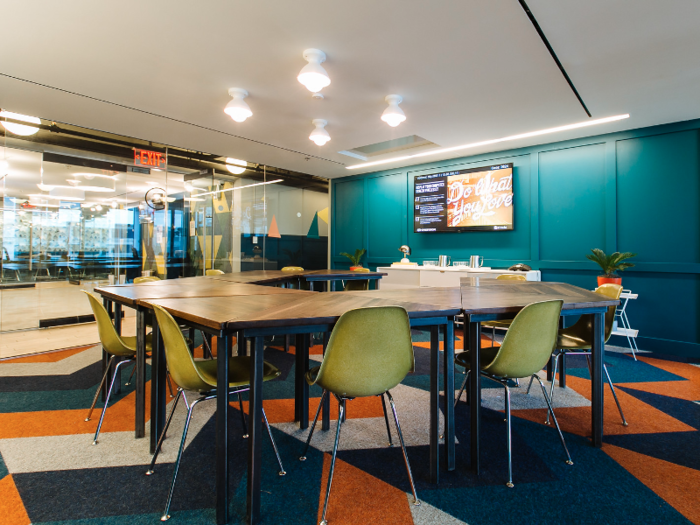
Quiet rooms will also allow employees get away from the noise and distractions of an open workspace, recharge, and do more focused work.
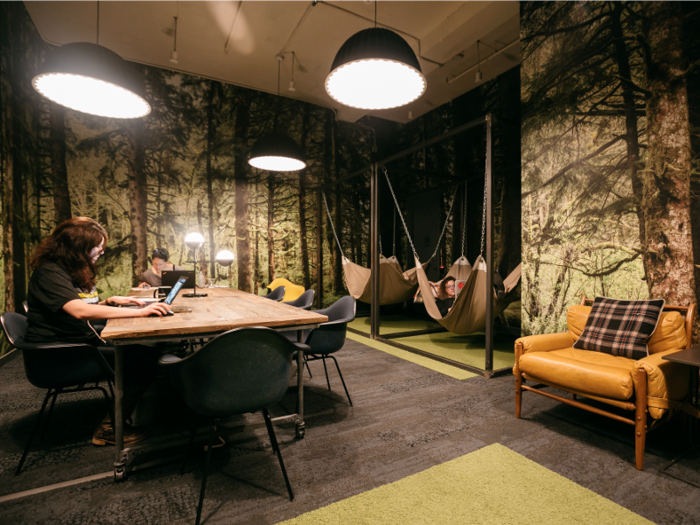
While private phone booths with a small work surface and seating will allow for the privacy not afforded by open-plan workspaces.
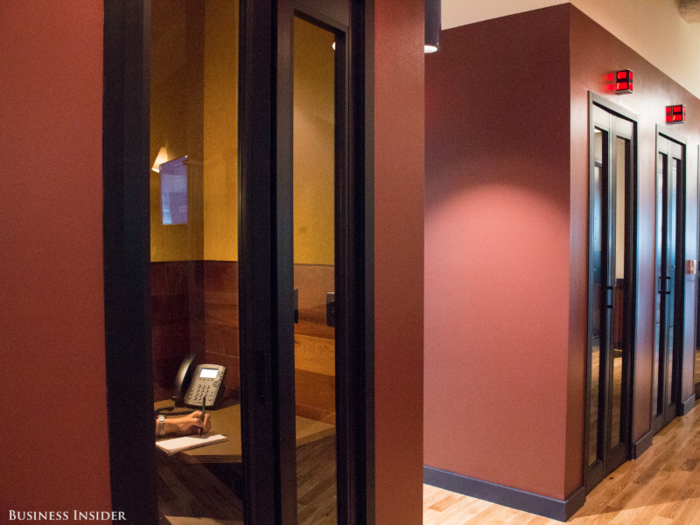
Some communal space furniture design like sawtooth counter-spaces and X-shaped "crosstalk" tables will help facilitate conversation and information sharing.
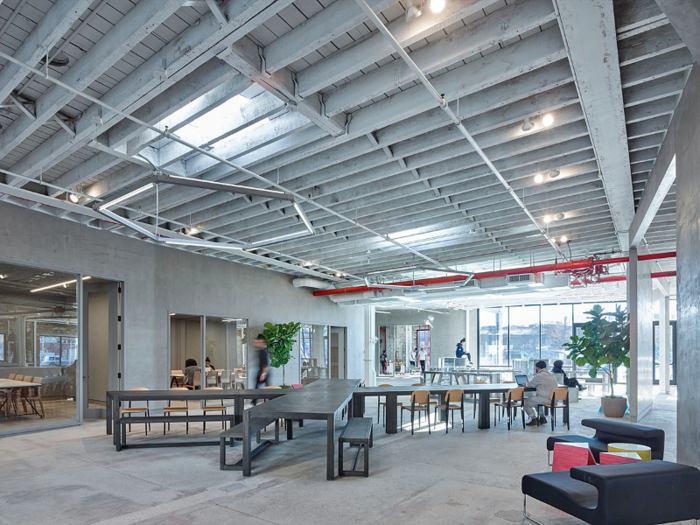
Hideaway nooks in particular can help lower anxiety levels for some workers.
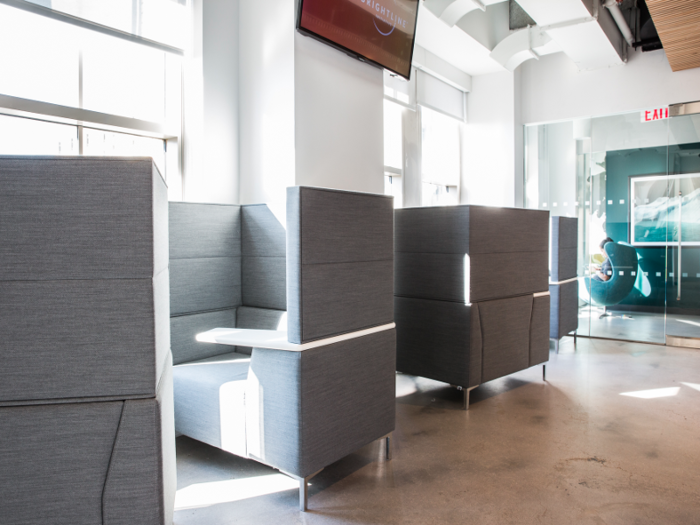
Source: 99u/Ron Friedman
... and soft lounge seating.
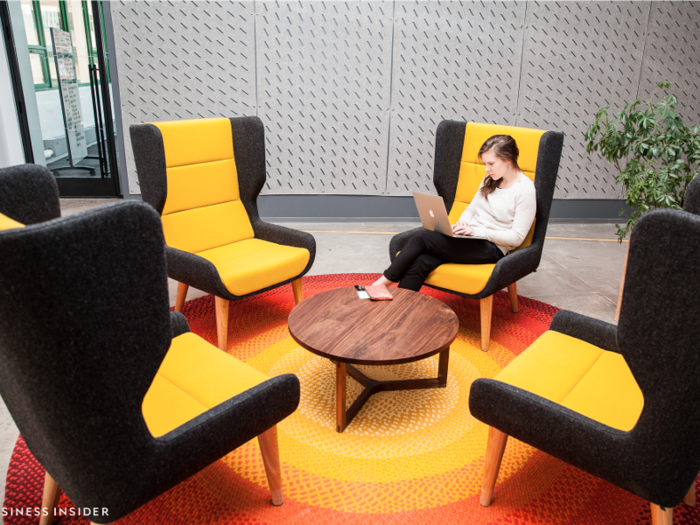
... cubbies ...
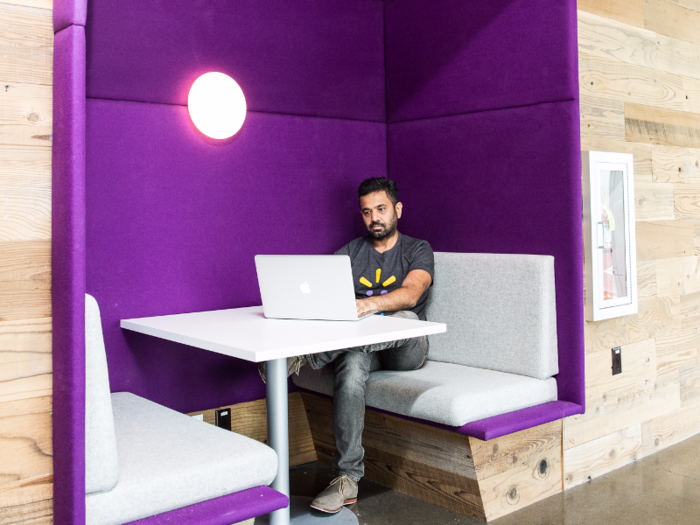
Open collaboration spaces will feature various seating options like long, communal tables ...
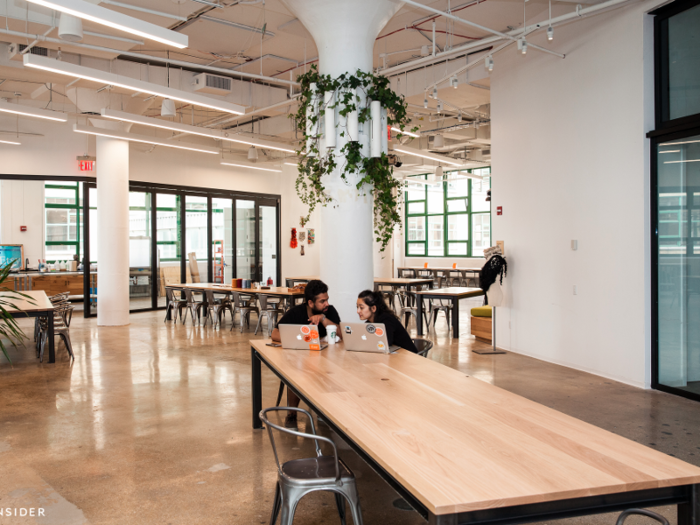
Meanwhile, private offices will still offer teams that require closed collaboration a space to work.
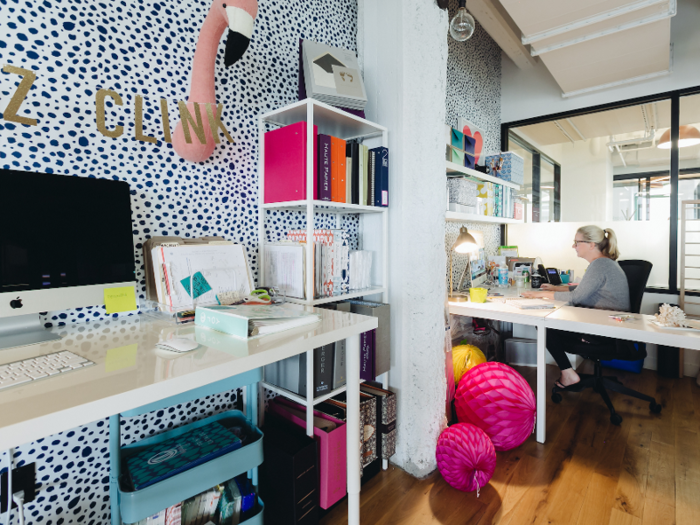
Source: HBR
Mixed workspaces that workers share will allow employees to move around based on their mood or the type of work they need to do.

Popular Right Now
Popular Keywords
Advertisement